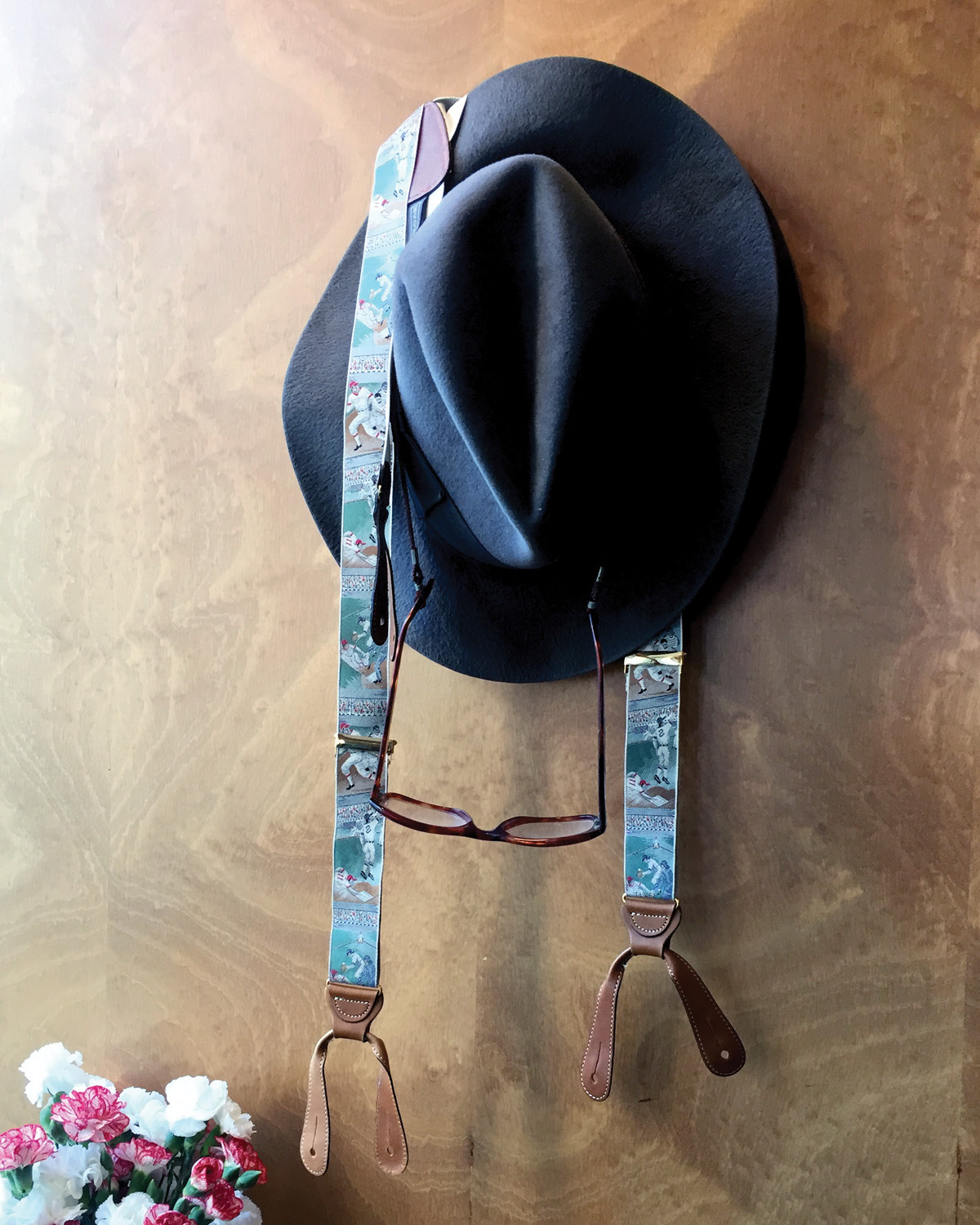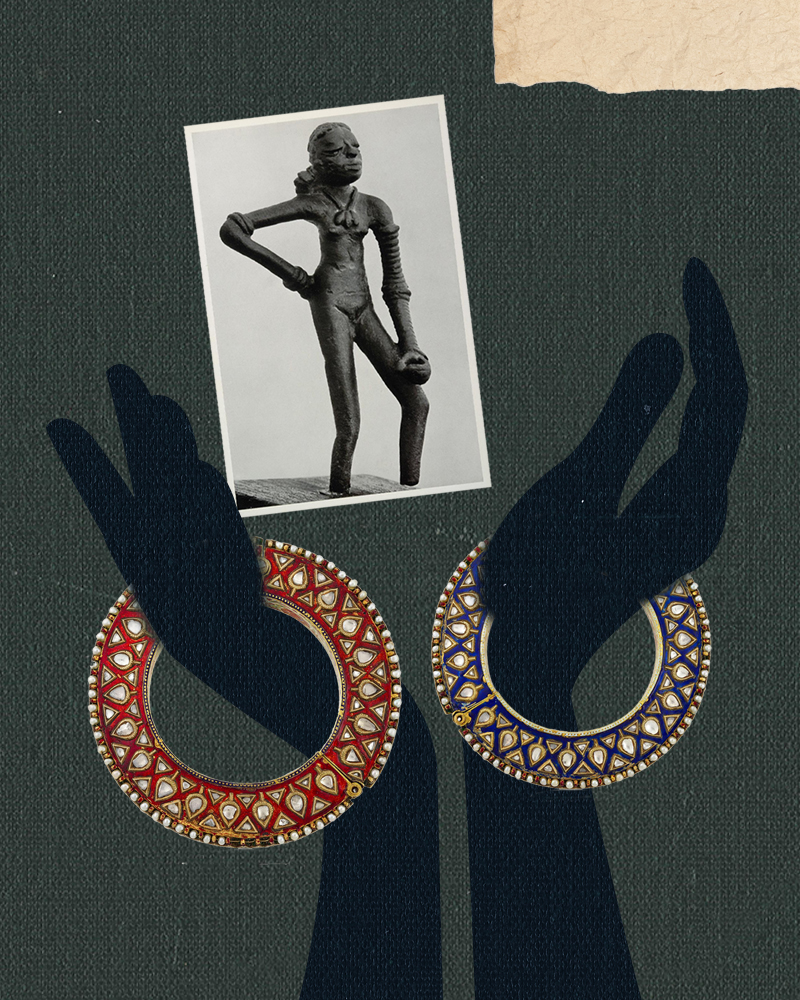William Goldberg: For the Love of Diamonds
In 1997, William Goldberg got a call from a Brazilian dealer about a newly unearthed 14 carat reddish-pink rough diamond. Without hesitation, he went to South America to see the stone, then proceeded to make the trip four more times to negotiate with the owners, but still couldn’t agree on a deal, recalls his son Saul. Still, the senior Goldberg believed that this rough diamond was likely a once-in-a-lifetime opportunity, so he called his friend and fellow jeweler Alisa Moussaieff in London, who told him to buy it.
Goldberg returned to Brazil one last time to seal the deal and brought the stone back to New York, where his team of master diamond cutters spent months assessing and faceting the gem. The result: a spectacular 5.11 carat internally flawless shield-cut red diamond. Goldberg wound up selling it to none other than Moussaieff, who named it the Moussaieff Red. And like he had long imagined, the stone went down in history as the largest known red diamond at that time.
It was that kind of unbridled passion, determination and, of course, keen eye for stones, that made Bill Goldberg a legend in the diamond industry, a business unlike any other. The insular diamond world has always been run largely by multigenerational families, and most deals are still sealed with a handshake and the words mazel und brucha, which mean luck and a blessing in Yiddish.
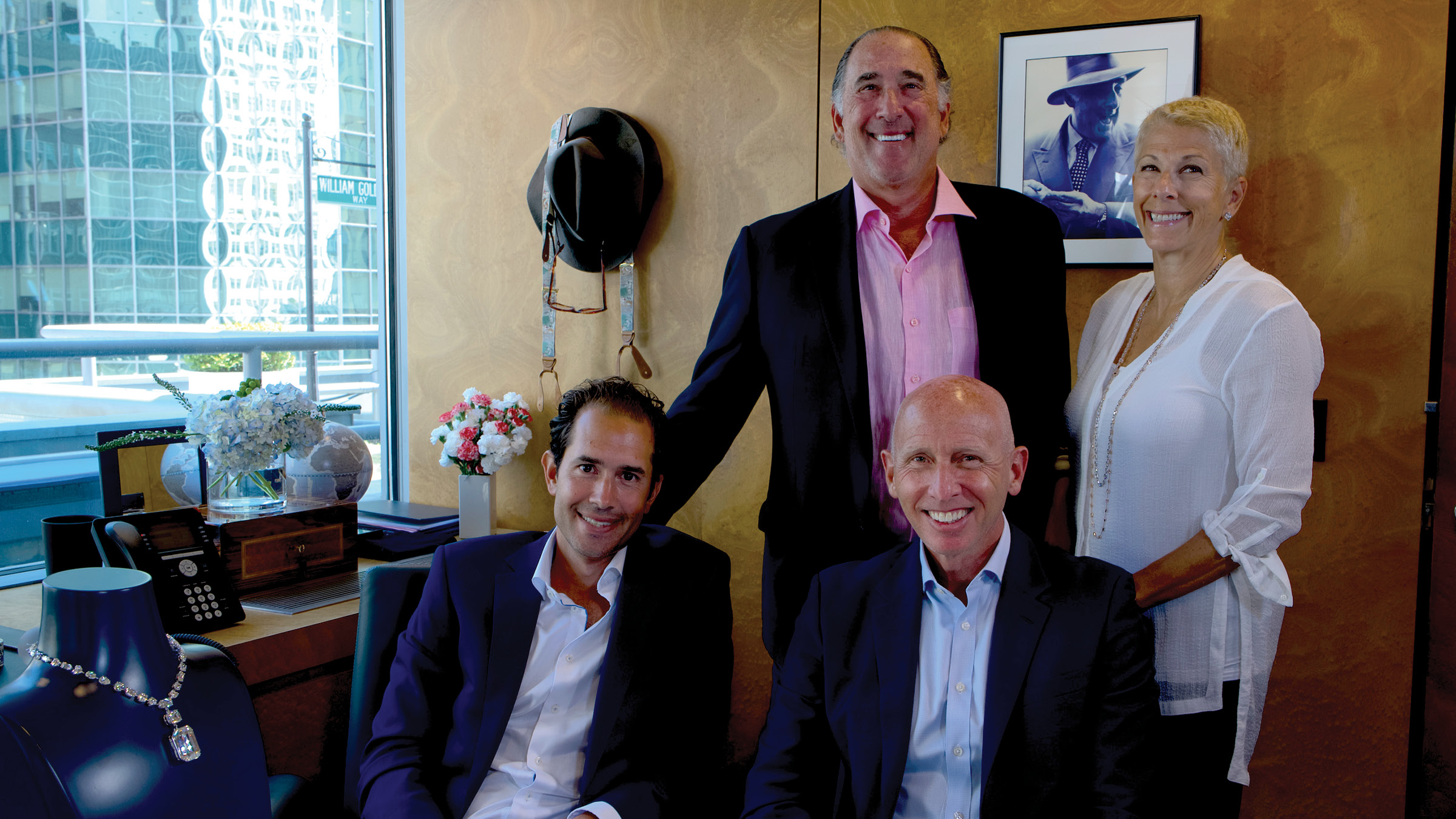
“He was a perfectionist.”
Eve Goldberg
Goldberg passed on his love of diamonds to his children Saul and Eve, son-in-law Barry Berg, and grandson Ben. When William passed away in 2003, they could have easily diversified or perhaps moved into more affordable diamonds, but they inherited their father’s uncompromising drive to uncover and sell only the world’s best and most beautiful diamonds. The family remains a driving force in the high-end diamond business, trading stones, evolving their family’s enterprise with modern diamond jewelry and also developing their proprietary Ashoka diamond cut.
On a recent visit to their office on William Goldberg Way (yes, New York City named a street after the diamantaire), the family sits at a table and passes around small, neatly folded paper packets holding their newest diamond acquisitions. Today, they are studying a pair of D-flawless emerald cut diamonds, and Saul asks if they are a good enough match to make earrings. Not everyone agrees. That’s a typical day in the family business: exceptional diamonds are evaluated, some are recut, and then set into necklaces or rings. Sometimes William’s 90-year-old wife Lili comes into the office and joins the conversation; family and business are always seamlessly mixed.
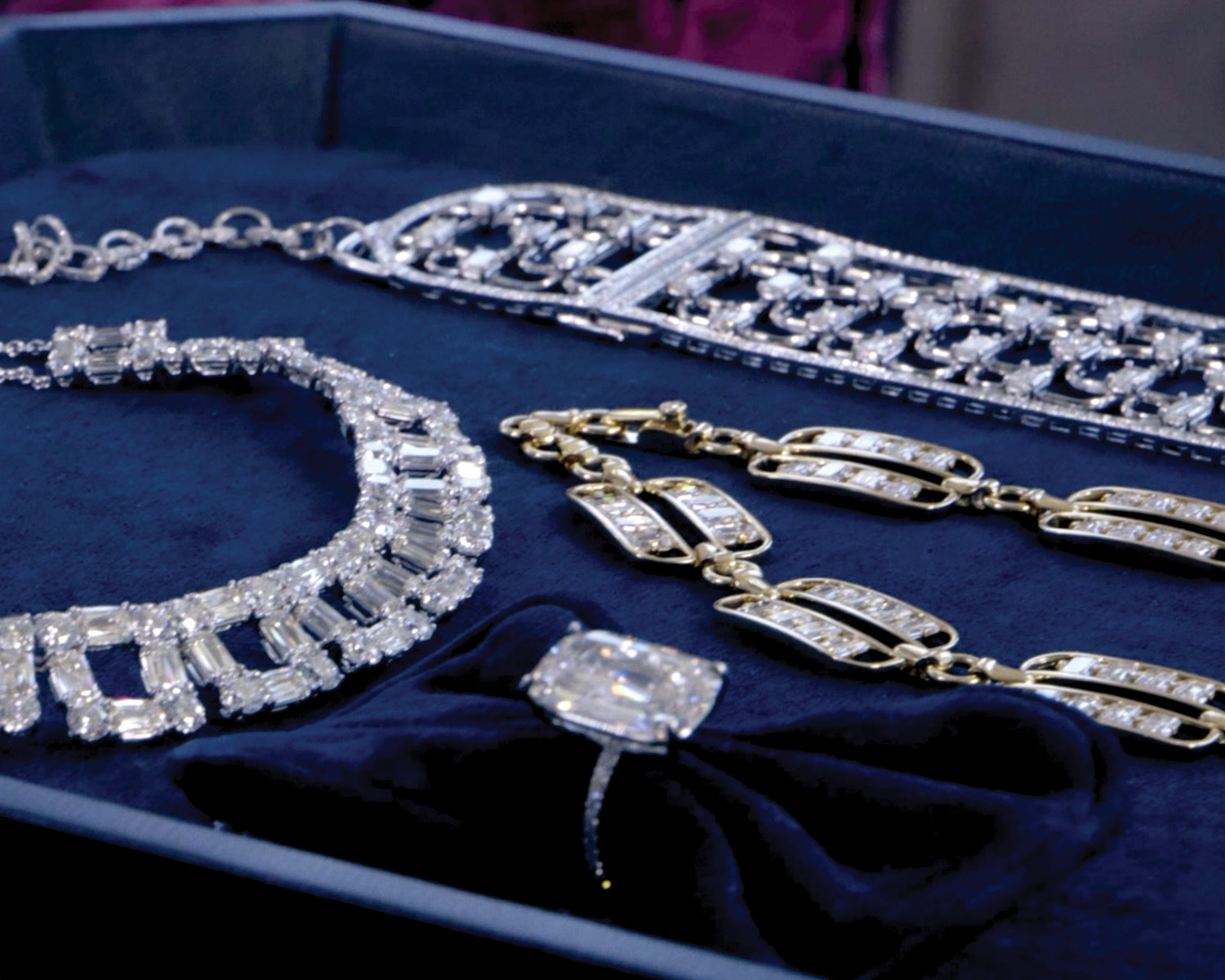
“Diamonds have always been such a big part of my life,” explains Saul’s son Ben, 37, who just had his third child (who will perhaps be the fourth generation to join the business). “During Friday night dinners with my parents and my grandparents we always talked about diamonds,” he recalls.
Saul started in the business as a young man, traveling to Antwerp, London and Sierra Leone to buy rough diamonds. The stones were cut in the company’s workshop, which has cut and faceted some of the world’s most important stones over the course of the past five decades.
“The workshop was my dad’s happy place,” says Eve Goldberg. “He was a perfectionist and could always spot even the tiniest flaw.” Today, it’s one of the last diamond-cutting workshops in New York City, as much of the cutting has moved to India and locations around the world.
The family has seen the industry evolve over the past few decades: some familial businesses consolidated or closed, and new bigger companies emerged. What has stayed the same is that William Goldberg’s clients around the world still want big stones.
“I have a passion for growing the Ashoka business.”
Ben Goldberg
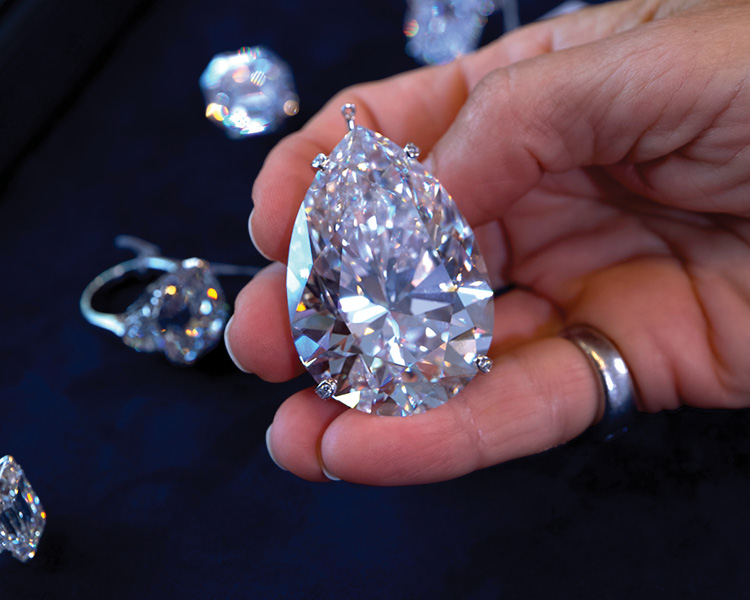
“People want big stones that they can hold in their hand,” says Saul. “The world is in turmoil. Gold prices are going through the roof now and we see that people are holding on to hard assets.” And the Goldbergs are still a go-to source for large, top-quality diamonds; when industry insiders, such as auction houses, dealers and retailers, get requests for unusually large or fancy colored diamonds, they often call on the Goldbergs.
The house is also the only source for the patented Ashoka diamond cut, an elongated cushion-cut with rounded corners. The story goes that the original Ashoka was cut centuries earlier and named for a powerful Indian warrior of the period, but not many diamantaires continued cutting the shape because it requires a specific type of rough stone and is difficult to achieve. But all that didn’t deter the Goldbergs, who modified the cut and trademarked it in 1999.
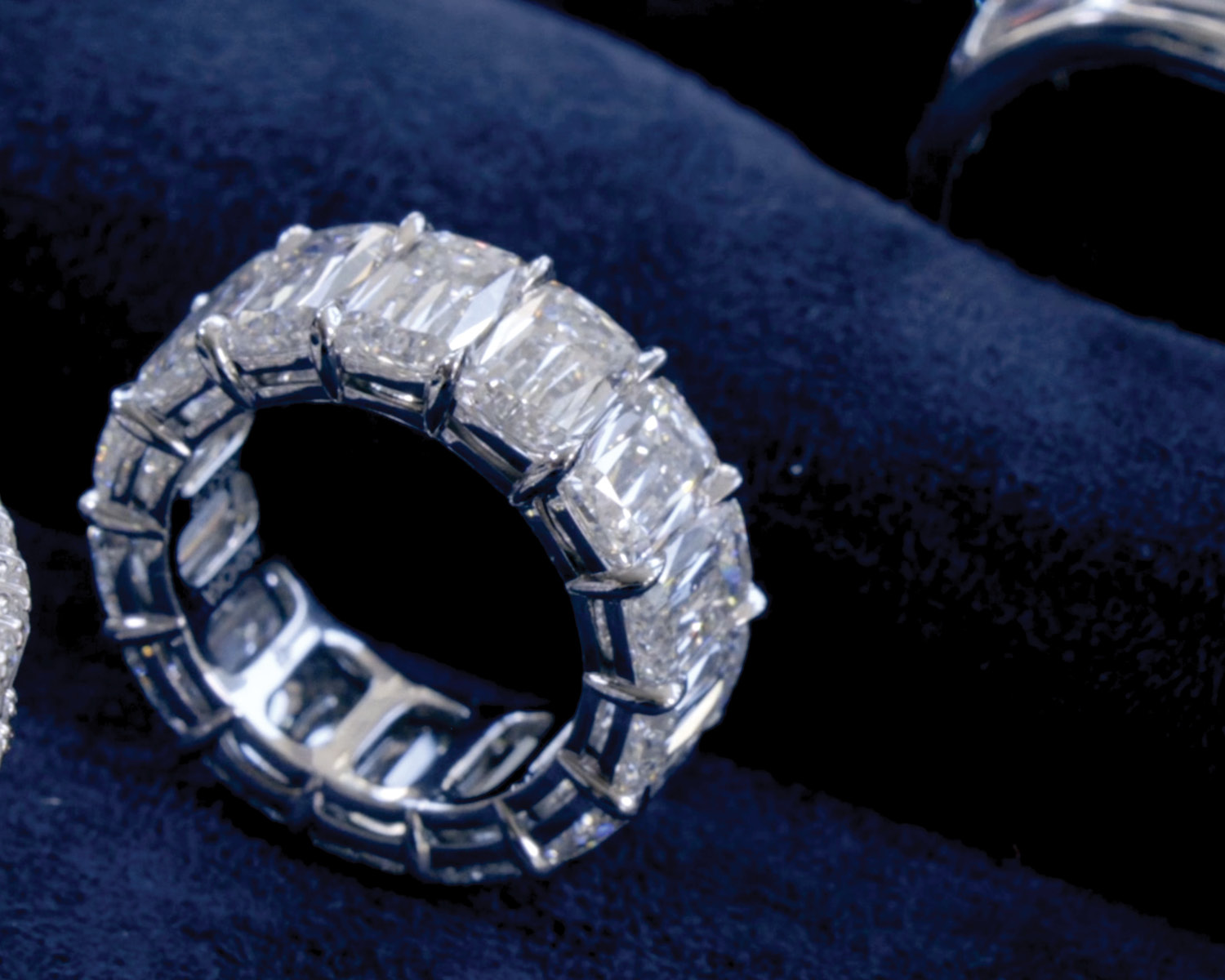
Now they have the exclusive rights to use the elegant diamond cut in a range of jewelry, from engagement rings to bangles. “I have a passion for growing the Ashoka business,” explains Ben. “It’s a beautiful stone and it has so much potential.”
But it’s not just about great diamonds. William Goldberg has expanded its namesake with a range of everyday diamond jewels, likes its popular diamond necklace strands, bold diamond bangles and chandelier earrings.
“My father always said that jewelry is meant to be worn and not kept in a safe,” recalls Eve. “We are making diamonds cool, more fashionable and more modern.”
Bill Goldberg would be happy to see that his diamonds are being worn every day—just the way he wanted it.
